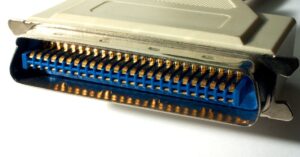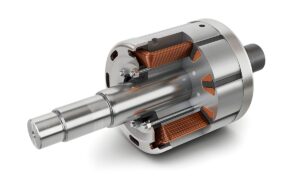MI cable (Mineral Insulated Cable) is an electrical cable known for its durability and reliability in harsh conditions. It consists of copper conductors inside a copper jacket, with >99.0% magnesium oxide (MgO) powder as an insulator. Other names for this type of cable include magnesium oxide or fire resistant cable.

This unique construction offers several advantages:
High temperature resistanceMI cables can withstand high temperatures up to 1083°C, which is the melting point of copper conductor. Magnesium Oxide (MgO) powder insulation can withstand temperatures up to 2800°C.
Fire resistantThe non-flammable materials used in MI cables ensure that they maintain their functionality even during a fire, making them ideal for sensitive circuits in buildings. The cable is fire resistant at temperatures up to 950°C for 180 minutes.
Moisture resistantThe solid copper jacket provides protection against moisture ingress, making these cables suitable for wet or corrosive environments.
durabilityMI cables have high resistance to physical damage due to their robust construction.
Compact sizeThe absence of organic insulation materials allows MI cables to have a smaller diameter than other cables of the same current carrying capacity. The cable has a higher carrying capacity than other cables of this size.
MI cable is also smoke-free, halogen-free and radiation-resistant.
MI cable construction
The construction of mineral insulated (MI) cable is unique and consists of the following components (inorganic compounds):
conductor:
material:Copper (or sometimes other metals such as stainless steel for specific applications).
Number of conductorsThey are usually single or multiple solid conductors.
insulation:
materialMagnesium oxide (MgO) powder.
PropertiesMgO is an inorganic material that provides excellent electrical insulation and resistance to high temperatures.
sheath:
material:Brass (most common) or sometimes stainless steel for added corrosion resistance.
veryThe sheath provides mechanical protection and acts as an electrical shield. For environments requiring additional protection against corrosion, stainless steel or other materials can be used for the sheath.
MI Cables Applications
1. Fire protection systems
Fire alarm systems:Ensure that alarm systems continue to function during a fire. This includes fire alarm systems in high-rise buildings.
Emergency lighting:Conserve power to emergency lighting circuits to safely direct building occupants during emergencies and ensure that lighting operates during a fire.
Sprinkler systems:Powering fire sprinkler control systems.
2. Power distribution in large capacity electrical equipment
Air conditioning units and water pumps that pass through the fire compartment of the building.
Elevator and roof advertising and landscape lighting equipment in elevator rooms.
Power distribution in large shopping malls.
3. Industrial heating
Thermal tracking:Provide constant temperature along pipelines to prevent freezing or maintain fluid viscosity.
high temperature ovens:Used in industrial ovens and cooking ovens where temperatures exceed the capabilities of conventional wires.
4. Power generation and distribution
Nuclear power plantsIt withstands high radiation levels and extreme temperatures in nuclear facilities, including critical safety systems. It is also used in testing, monitoring and temperature control.
Power plantsEnsuring reliable power distribution within power plants.
5. Dangerous places
Chemical and petrochemical plantsWorking in corrosive environments with explosive atmospheres and high temperature environments such as ovens and stoves.
Oil and Gas IndustryIt is used in offshore oil platforms and oil refineries where high standards of reliability and safety are required.
Used in environments containing explosive gases, dusts or vapors, ensuring safe and reliable electrical connections.
6. Construction
Critical infrastructure:Wiring in hospitals, airports, tunnels and other critical infrastructure.
Historic buildingsRehabilitation of old buildings and providing them with fire-resistant wiring without compromising the integrity of the architecture.
7. Transportation
Railways and MetroProviding reliable power and control cables in underground and elevated transportation systems, as well as lighting systems.
Marine Applications:Used on ships and offshore platforms where exposure to harsh marine environments and corrosion is common. Also used to connect alarm systems at sea and on oil tankers in harsh conditions.
8. Specialized equipment
Medical devicesEnsuring the reliability of sensitive medical equipment and systems.
Measurement and ControlIn precision devices that require stable and reliable electrical connections.
9. Renewable energy
Solar power plantsIt is used in solar installations where reliability and longevity are critical.
Wind turbinesProviding electrical and control wiring for wind turbines in harsh and changing weather conditions.
10. Data Centers
Ensure the safety and reliability of uninterrupted power supply to critical data center infrastructure, reducing the risk of downtime due to fire or other hazards.
11. Military and Defense
Weapons SystemsIt is used in critical defense systems where high reliability is required under extreme conditions.
Field operationsProvides powerful, reliable power to field-deployed equipment and temporary installations.
12. Industrial thermometers
Where is MI cable prohibited to use?
Although not directly prohibited, MI cables are not suitable for the following:
Flexible, temporary and removable fixtures. MI cables are rigid and difficult to install in flexible environments.
General residential useAlthough MI cables are excellent for specific mission-critical applications, they are not typically used in general residential wiring due to cost, installation complexity, and other suitable alternatives.
Nassau National Cable provides a range of MI Cables.



